
International Journal of Bioprinting
Scope & Guideline
Elevating the standards of bioprinting research and application.
Introduction
Aims and Scopes
- 3D Bioprinting Techniques:
The journal covers a variety of 3D bioprinting techniques including extrusion-based printing, inkjet printing, and laser-assisted bioprinting, focusing on how these methods can be optimized for various applications. - Biomaterials and Bioinks:
Research on the development and characterization of novel biomaterials and bioinks is a core focus, exploring their mechanical, biological, and biochemical properties for effective tissue engineering. - Tissue Engineering Applications:
The journal emphasizes applications of bioprinting in regenerative medicine, including the printing of complex tissue structures, organoids, and organ-on-a-chip models to advance therapeutic strategies. - Clinical and Preclinical Studies:
It includes studies that bridge the gap between laboratory research and clinical applications, assessing the efficacy and safety of bioprinted constructs in preclinical models. - Multidisciplinary Approaches:
The journal encourages interdisciplinary research that integrates biology, materials science, engineering, and clinical medicine to address complex challenges in bioprinting.
Trending and Emerging
- Personalized Medicine:
There is an increasing emphasis on personalized bioprinting approaches, including patient-specific implants and scaffolds, highlighting the potential for tailored therapies that meet individual patient needs. - Vascularization Strategies:
Emerging research focuses on developing methods for creating vascularized tissues, addressing a critical challenge in tissue engineering to ensure the survival and functionality of bioprinted constructs. - Integration of Smart Technologies:
The integration of smart technologies such as sensors and responsive materials into bioprinted constructs is gaining traction, allowing for more dynamic and functional tissue engineering applications. - Sustainable and Eco-friendly Materials:
A growing trend in the journal is the exploration of sustainable materials and processes in bioprinting, reflecting a broader movement towards environmentally friendly practices in scientific research. - Regenerative Medicine Innovations:
The journal highlights advancements in regenerative medicine that utilize bioprinting, including new techniques for repairing complex tissues and addressing degenerative diseases.
Declining or Waning
- Traditional Manufacturing Techniques:
As bioprinting technology advances, traditional manufacturing methods for medical devices and scaffolds appear to be receiving less attention, as researchers focus on more innovative, bioprinting-specific methodologies. - Basic Material Science Studies:
There is a noticeable decrease in papers solely focused on the fundamental properties of materials without direct application to bioprinting, as the field shifts towards more application-oriented research. - Non-Biomedical Applications:
Research that explores 3D printing outside of biomedical applications is becoming less frequent, indicating a narrowing focus on clinical and medical uses of bioprinting technologies.
Similar Journals
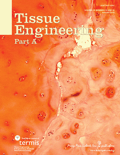
Tissue Engineering Part A
Unlocking Breakthroughs in Biomaterials and BioengineeringTissue Engineering Part A is a prestigious peer-reviewed journal published by MARY ANN LIEBERT, INC that focuses on innovative research and advancements within the field of tissue engineering and regenerative medicine. Since its inception in 2008, this journal has played a critical role in disseminating cutting-edge findings that bridge the gap between laboratory research and clinical application, underscoring its significance in the scientific community. With a diverse scope encompassing biochemistry, bioengineering, biomaterials, and biomedical engineering, the journal ranks notably in the Scopus database, holding a Q2 quartile status across multiple categories, thus reflecting its high impact on ongoing research and professional practice. For researchers, professionals, and students, Tissue Engineering Part A serves as an invaluable resource, offering insights into the latest methodologies and breakthroughs that drive the future of healthcare and therapeutic strategies. While primarily a subscription-based journal, it ensures that vital research is accessible to a broad audience of scientists and engineers committed to advancing the life sciences.
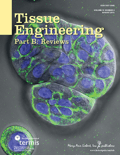
Tissue Engineering Part B-Reviews
Elevating Knowledge in Biochemical and Biomedical Engineering.Tissue Engineering Part B-Reviews is a premier academic journal published by MARY ANN LIEBERT, INC, focusing on the interdisciplinary field of tissue engineering and regenerative medicine. With an impressive impact factor that places it in the Q1 category across multiple relevant fields—including Biochemistry, Bioengineering, Biomaterials, and Biomedical Engineering—this journal provides a vital platform for researchers and professionals to disseminate cutting-edge findings and comprehensive reviews. Covering a vast scope from 2008 to 2024, the journal is committed to advancing knowledge in the application of engineering principles to biological tissues, making it an indispensable resource for those at the forefront of biomedical innovation. While the journal does not currently offer open access options, its rigorous peer review process ensures high-quality contributions that are essential for academic and practical advancements. The journal's rankings in Scopus reflect its significance, catering to a diverse audience of students, researchers, and practitioners seeking the latest insights in this dynamic field.

ARTIFICIAL ORGANS
Empowering Researchers in Biomedical Engineering.ARTIFICIAL ORGANS is a leading academic journal published by Wiley, focusing on the interdisciplinary fields of bioengineering, biomaterials, and biomedical engineering. Established in 1977 and continuing through 2024, this journal plays a pivotal role in advancing research related to artificial organs and their impact on healthcare innovations. With an impressive impact factor and notable Q2 rankings across multiple categories, including Medicine and Biomedical Engineering, ARTIFICIAL ORGANS caters to a global audience of researchers, professionals, and students devoted to the latest developments in organ replacement and regenerative medicine. Although not an open-access journal, it maintains a rich repository of essential research articles, reviews, and case studies that collectively enhance the scientific community's understanding of artificial organ technologies. By publishing high-quality, peer-reviewed content, ARTIFICIAL ORGANS remains a vital source for emerging knowledge and collaborations in the exciting field of artificial organ research.
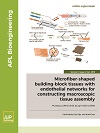
APL Bioengineering
Transforming Ideas into Bioengineering BreakthroughsAPL Bioengineering is a premier open-access journal published by AIP Publishing, dedicated to advancing the field of bioengineering and its interdisciplinary applications. Established in 2017, this journal serves as a vital platform for researchers, professionals, and students interested in the critical intersections of bioengineering, biomaterials, biomedical engineering, and biophysics. With an impressive impact factor and consistent rankings in the Q1 category across multiple domains, including biochemistry and materials science, APL Bioengineering has positioned itself among the top journals in its field. The journal aims to publish innovative original research, comprehensive reviews, and insightful case studies that further the understanding and application of bioengineering principles. Since its inception, APL Bioengineering has fostered a community of thought leaders, providing open access to ensure broad dissemination of knowledge and advancements that underpin the future of biomedical innovation.

Biomedical Physics & Engineering Express
Connecting Biomedical Physics with Engineering ExcellenceBiomedical Physics & Engineering Express, published by IOP Publishing Ltd, serves as a dynamic platform for the dissemination of groundbreaking research in the interdisciplinary domains of biomedical physics, engineering, and related fields. With a focus on innovative solutions for healthcare challenges, the journal extends its reach to a global audience, providing valuable insights that influence both academic research and practical applications. Operating under an open-access format, this journal ensures that vital scientific discoveries are readily available to researchers, professionals, and students alike. Ranking within the Q3 and Q4 quartiles across various categories—including Bioengineering and Biomedical Engineering—indicates its emerging influence in the scientific community since its inception in 2015. With an increasing footprint in Scopus rankings and a commitment to advancing knowledge in subfields such as biophysics and health informatics, Biomedical Physics & Engineering Express plays a crucial role in shaping future innovations in healthcare technology and patient care.
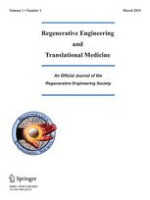
Regenerative Engineering and Translational Medicine
Empowering Progress in Translational MedicineRegenerative Engineering and Translational Medicine is an esteemed academic journal published by Springer Heidelberg, focusing on the interdisciplinary fields of biomaterials, biomedical engineering, and cell biology. With an ISSN of 2364-4133 and an E-ISSN of 2364-4141, the journal has carved a niche for itself since its inception in 2015, showcasing cutting-edge research that bridges the gap between scientific findings and practical applications in regenerative medicine. As a recognized platform in its field, it is currently positioned within Q3 quartiles in biomaterials, biomedical engineering, and medicine (miscellaneous), with a Scopus ranking that reflects its growing influence among peers. The journal aims to disseminate high-quality, peer-reviewed articles that highlight advancements in regenerative engineering, further advancing both theoretical and applied research. Scholars and practitioners seeking to stay at the forefront of the ever-evolving landscape of regenerative health solutions will find invaluable insights and innovations within these pages. Join a community of leading thinkers and explore the journal's comprehensive research contributions, which are crucial for fostering partnerships between academia and industry in the quest for transformative medical solutions.
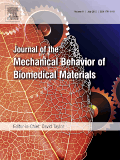
Journal of the Mechanical Behavior of Biomedical Materials
Pioneering Research at the Intersection of Engineering and MedicineJournal of the Mechanical Behavior of Biomedical Materials is a leading academic publication dedicated to the intersection of mechanical engineering and biomedical innovation. Published by ELSEVIER in the Netherlands, this journal, which holds a solid presence within Q2 in Biomaterials and Biomedical Engineering, and Q1 in Mechanics of Materials as of 2023, features high-impact research with a measurable Scopus ranking that places it in the top tier of its fields. With an impressive percentile performance—82nd in Mechanics of Materials and 73rd in Biomedical Engineering—this journal serves as a vital resource for researchers, students, and professionals seeking to enrich their understanding of the mechanical behaviors of biomaterials and their applications. Spanning converged years from 2008 to 2024, it provides access to a wealth of pioneering research that advances the knowledge essential for the development of innovative biomedical applications. Engage with cutting-edge studies and broaden your expertise in the rapidly evolving realms of biomaterials and biomedical engineering through this authoritative publication.
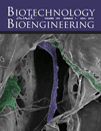
BIOTECHNOLOGY AND BIOENGINEERING
Unlocking Potential in Biotechnology and BioengineeringBIOTECHNOLOGY AND BIOENGINEERING, published by Wiley, is a leading journal in the domains of applied microbiology, biotechnology, and bioengineering. With an ISSN of 0006-3592 and E-ISSN of 1097-0290, this journal has established itself as an essential resource for researchers, professionals, and students aiming to advance their knowledge and stay updated on cutting-edge innovations and methodologies in biotechnology. The journal has a commendable impact factor, and it is ranked in the second quartile (Q2) across multiple categories for 2023. This positions it favorably among its peers, underscoring its significance in the scientific community; for example, it ranks 23rd out of 127 in the field of Applied Microbiology and Biotechnology. As a hub of critical research findings and technological advancements, BIOTECHNOLOGY AND BIOENGINEERING invites contributions that push the boundaries of biotechnological applications, fostering a deeper understanding and development of sustainable solutions to current global challenges.
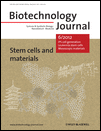
Biotechnology Journal
Unveiling cutting-edge developments in molecular medicine.Biotechnology Journal, published by WILEY-V C H VERLAG GMBH, stands at the forefront of biotechnological research and innovation, recognized for its significant contributions to the fields of applied microbiology, molecular medicine, and broader biotechnology. With its ISSN 1860-6768 and E-ISSN 1860-7314, this journal has achieved impressive 2023 quartile rankings, positioning itself in Q1 for both Applied Microbiology and Biotechnology and Medicine (miscellaneous), and Q2 in Molecular Medicine, showcasing its impact and relevance within the scientific community. Based in Germany, the journal aims to disseminate high-quality research that drives advancements in biotechnological applications, fostering a platform for researchers, professionals, and students to engage with cutting-edge developments. With its ongoing commitment to excellence, the Biotechnology Journal is an essential resource for those seeking to stay informed about the latest trends and innovations in biotechnology.
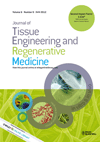
Journal of Tissue Engineering and Regenerative Medicine
Empowering researchers with impactful insights in tissue engineering.Journal of Tissue Engineering and Regenerative Medicine, published by WILEY, stands as a pivotal platform in the fields of biomaterials, biomedical engineering, and regenerative medicine. With an ISSN of 1932-6254 and an E-ISSN of 1932-7005, this journal, based in the United Kingdom, has consistently delivered high-quality research since its inception in 2006, converging critical insights through 2024. With an impressive citation profile reflected in its Scopus rankings—specifically a rank of #58 in Medicine and #75 in Biomedical Engineering—the journal is acknowledged for its substantial impact, as demonstrated by its competitive quartile standings in 2023. Notably, it maintains a Q3 ranking in Biomaterials and Q2 in both Biomedical Engineering and Medicine (miscellaneous), showcasing its influence and relevance in the rapidly evolving interplay between engineering and medicine. The journal serves as a vital resource for researchers and practitioners aiming to stay abreast of innovations and breakthroughs in regenerative therapies, tissue scaffolds, and biomaterials. While not an open-access publication, it fosters academic dialogue and knowledge dissemination that is crucial for advancing the field.